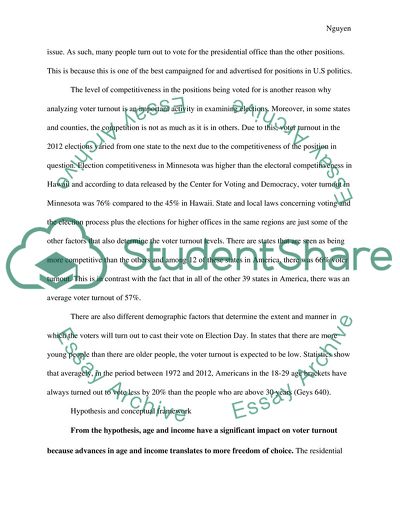Cite this document
(Voter Turnout in the United States of America 2012 Elections Coursework Example | Topics and Well Written Essays - 2500 words, n.d.)
Voter Turnout in the United States of America 2012 Elections Coursework Example | Topics and Well Written Essays - 2500 words. https://studentshare.org/politics/1874451-voter-turnout-in-the-united-states-of-america-2012-elections
Voter Turnout in the United States of America 2012 Elections Coursework Example | Topics and Well Written Essays - 2500 words. https://studentshare.org/politics/1874451-voter-turnout-in-the-united-states-of-america-2012-elections
(Voter Turnout in the United States of America 2012 Elections Coursework Example | Topics and Well Written Essays - 2500 Words)
Voter Turnout in the United States of America 2012 Elections Coursework Example | Topics and Well Written Essays - 2500 Words. https://studentshare.org/politics/1874451-voter-turnout-in-the-united-states-of-america-2012-elections.
Voter Turnout in the United States of America 2012 Elections Coursework Example | Topics and Well Written Essays - 2500 Words. https://studentshare.org/politics/1874451-voter-turnout-in-the-united-states-of-america-2012-elections.
“Voter Turnout in the United States of America 2012 Elections Coursework Example | Topics and Well Written Essays - 2500 Words”. https://studentshare.org/politics/1874451-voter-turnout-in-the-united-states-of-america-2012-elections.


